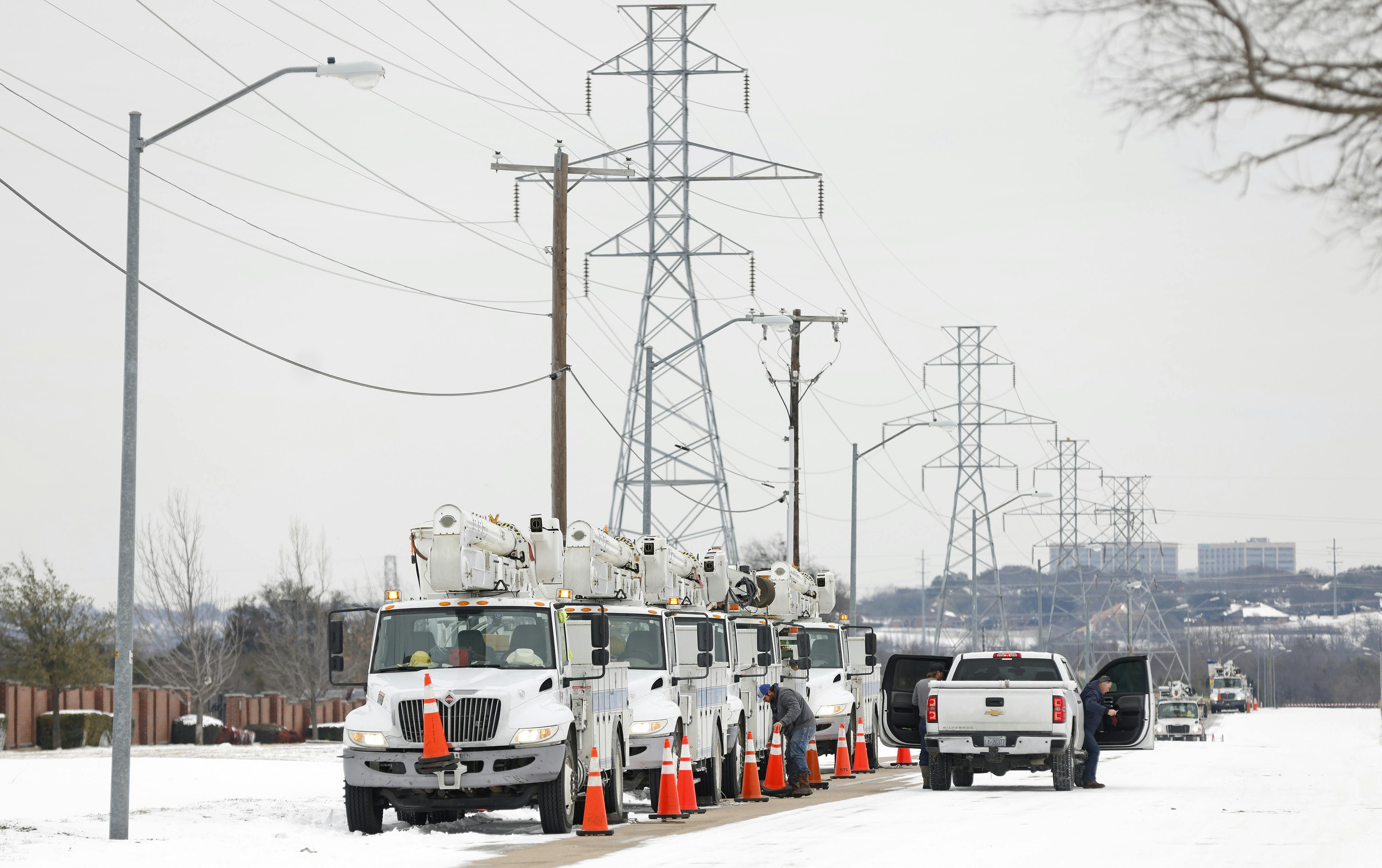|
 Ron Jenkins/Getty | |||
| As the ongoing power outages in below-freezing Texas remain national news, I’d like to draw your attention to Kate Aronoff’s piece on Tuesday about how conservatives are blaming the deadly crisis in Texas on renewable energy—specifically, wind power. It’s true that wind turbines have ice problems in winter weather (deicing systems are typically implemented further north). But as Kate pointed out, the real problem was the failure of natural gas generation, which Texas’s independent and rather outmoded grid relies on for peak energy generation (every other state in the continental U.S. is part of multistate energy grids):
That didn’t stop Fox News’s Tucker Carlson from an outrageous bit of misinformation. “The windmills failed like the silly fashion accessories they are, and people in Texas died,” he said on Monday. Troublingly, mainstream nonpartisan media also picked up this narrative, with early coverage in The New York Times and elsewhere emphasizing wind power failures in headlines and story leads. That narrative has now been debunked by one of the people in charge of the Texas grid, who spoke with Bloomberg about the real source of the outages:
The allegation that wind power largely caused the Texas blackouts is bogus. Once started by political interests, these narratives have a way of taking on a life of their own, as evidenced by just how many reputable news sources began reporting the outages this way on Monday and Tuesday. (Some outlets later attempted to atone for their errors: The Times on Tuesday noted that frozen turbines were “a smaller part of the problem.”) The bigger problem, as these outlets are belatedly realizing, was that natural gas plants failed—and there was no way for the Texas grid, which was set up in 1935 to avoid federal oversight, to compensate. Given the amount of severe weather that global warming is sending our way, the state may want to reconsider the merits of going it alone. –Heather Souvaine Horn, deputy editor | |||
| Advertising  | |||
 | |||
 | |||
| Bill Gates is turning his considerable resources to climate change. His new book, How to Avoid Climate Disaster, came out this week. | |||
 | |||
| The book has some issues. Bill McKibben’s review for The New York Times is worth your time. | |||
 | |||
| Volunteers race to save thousands of stunned turtles washing up in Texas | |||
| Volunteers in Texas are trying to save cold-stunned sea turtles from the freezing temperatures, as people load boats and Subarus with sluggish turtles. Unless they are pulled from the water or beach, the turtles, motionless from the cold, are vulnerable to predators, freezing, or drowning:
Teo Armus | The Washington Post | |||
| Advertising  | |||
 | |||
| Support Independent, Issue-Driven Journalism | |||
| | |||
| Copyright © 2021, The New Republic, All rights reserved. | |||
